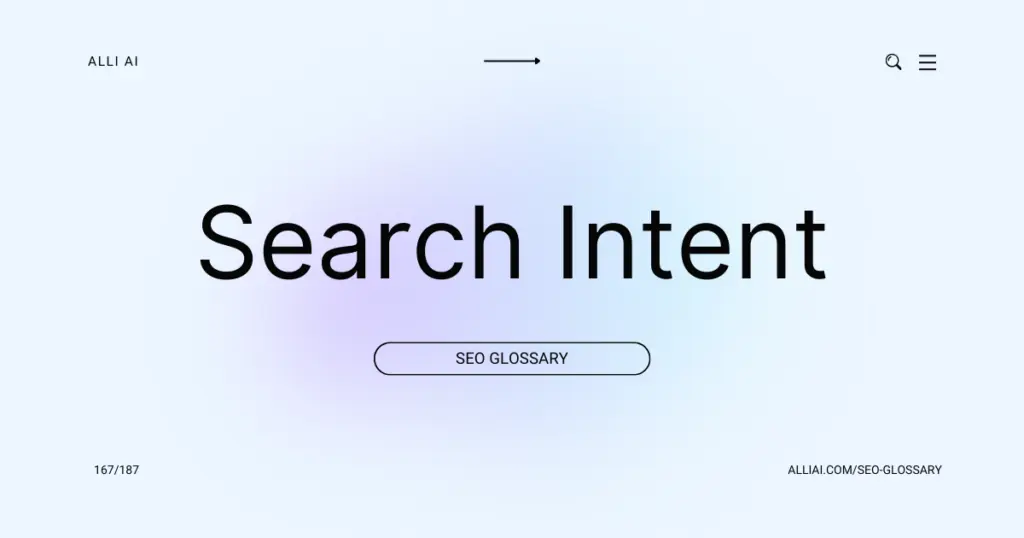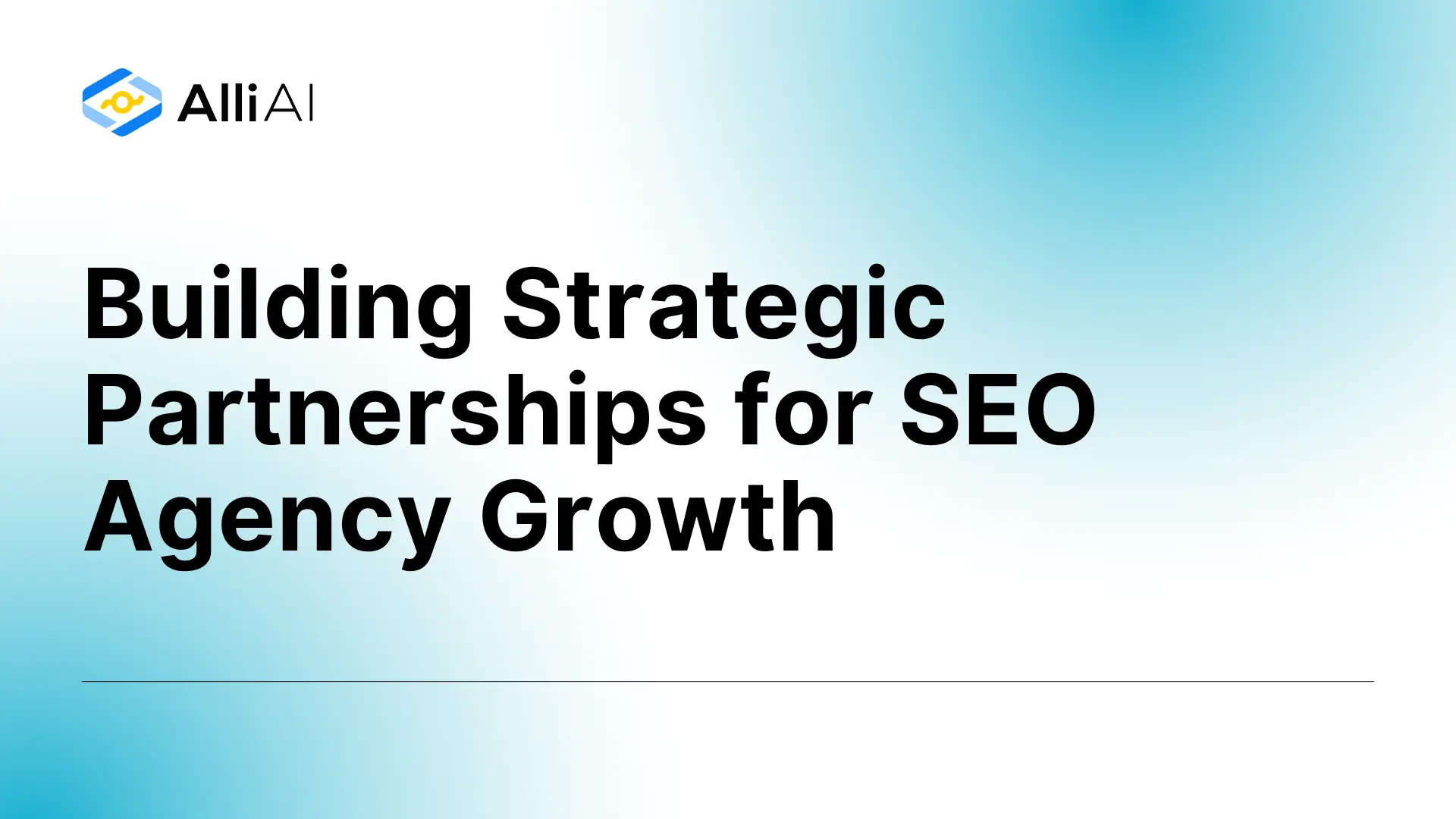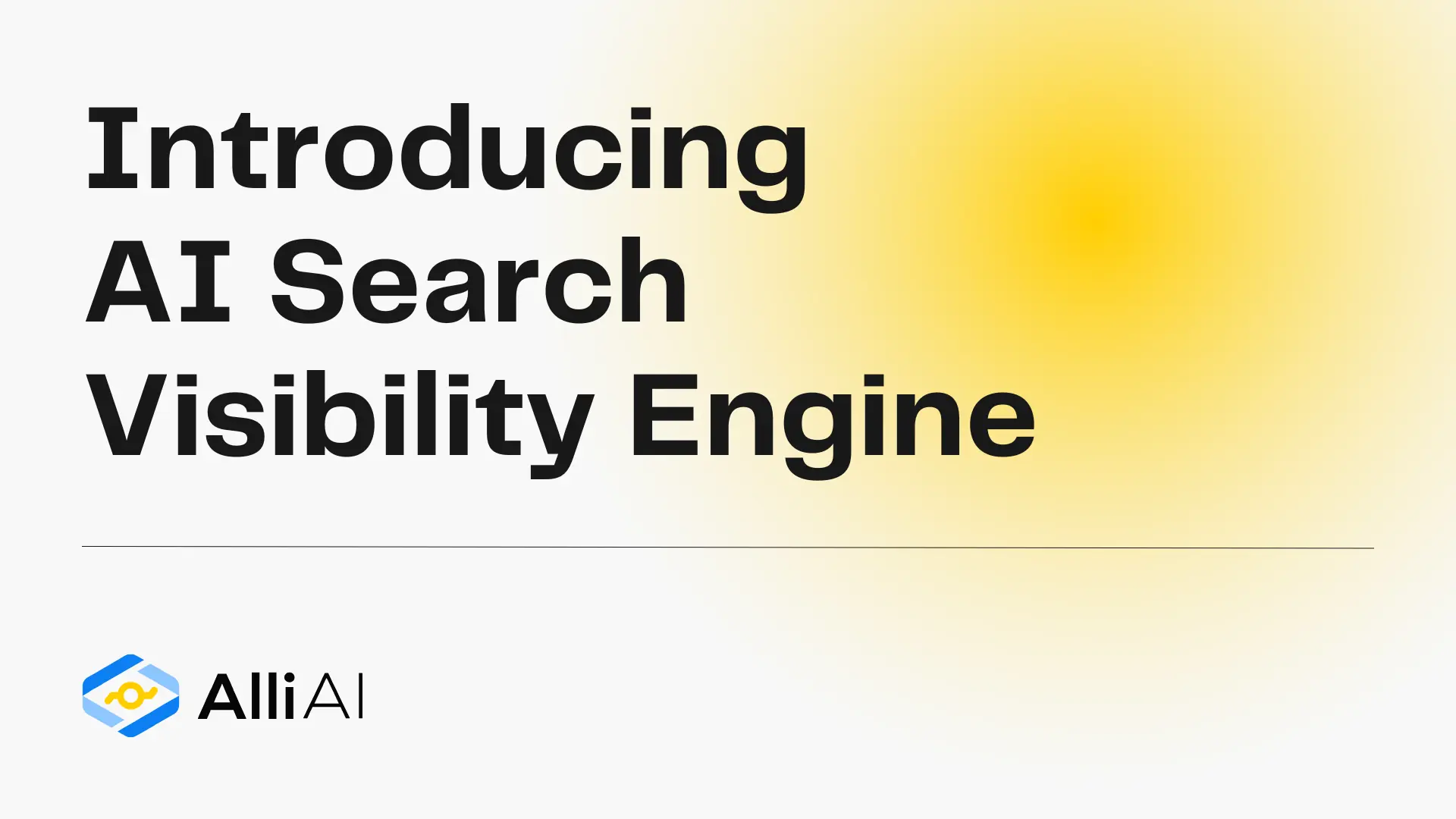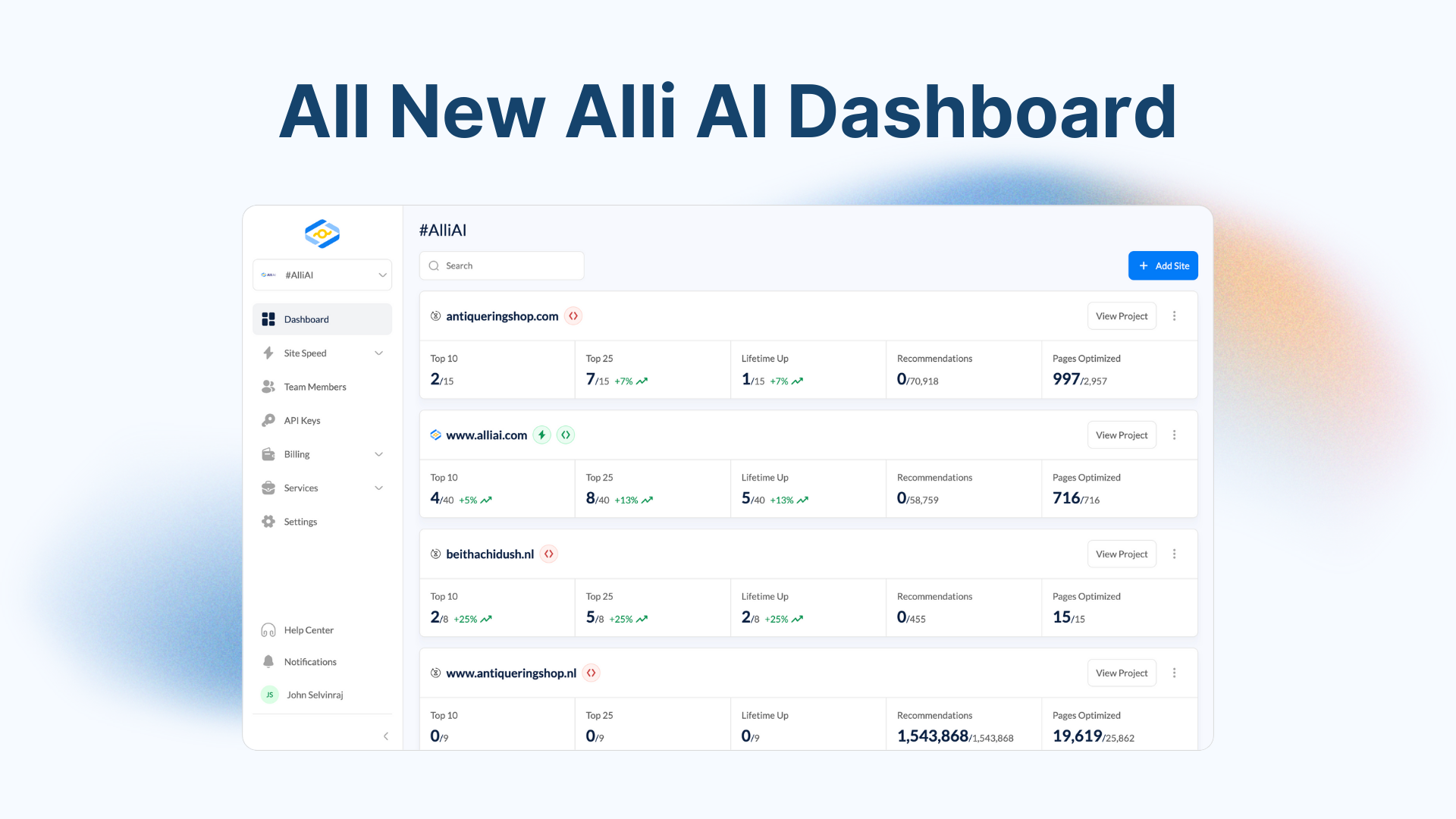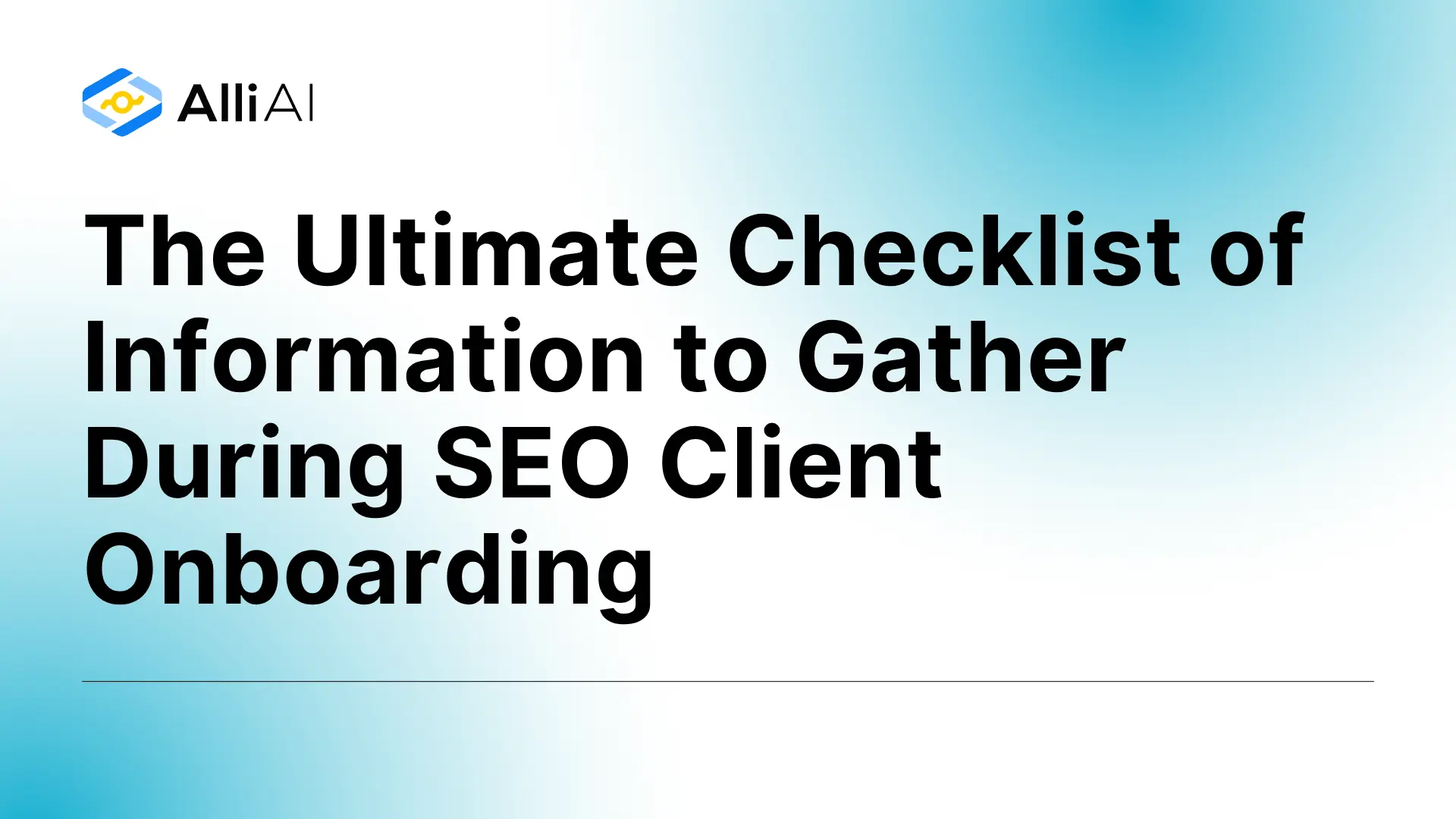What Does Search Intent Mean?
Search intent refers to the purpose or goal that a user has in mind when typing a query into a search engine. It’s why someone is conducting a specific search, whether they’re looking to buy something, find a particular website, or obtain information on a topic. Understanding search intent is crucial for creating content that meets the needs of users and performs well in search engine results.
Where Does Search Intent Fit Into The Broader SEO Landscape?
Search intent fits into the broader SEO landscape as a critical component that informs content creation, keyword strategy, and user experience optimization. It helps in understanding why users perform search queries, allowing marketers to align their webpage content more closely with user needs and expectations. This affects various SEO tactics including content marketing, on-page SEO, and link-building strategies. By correctly identifying and addressing search intent, websites can improve their relevance, increase organic traffic, and enhance conversion rates. Additionally, search engines like Google place a strong emphasis on matching results to the precise intent behind searches, directly impacting a site’s ranking and visibility. Therefore, optimizing for search intent is essential for effective SEO.
Real Life Analogies or Metaphors to Explain Search Intent
1. Search Intent is like a shopping list: Just as a shopping list reflects exactly what you need from the grocery store, search intent reveals what a user specifically wants to find or accomplish when they type a query into a search engine.
2. Search Intent as a restaurant menu: Imagine search intent like choosing a dish from a menu; each search query fits into a category like appetizers for quick answers, main courses for something substantial, or desserts for something more indulgent or detailed.
3. Search Intent and fishing: Consider search intent as choosing the right bait for fishing. Different fish are caught with different baits, and similarly, different search intents require different types of content to effectively ‘hook’ the desired audience.
4. Search Intent as a compass: Just as a compass helps a hiker find the right path, search intent guides the content creator to align their message with the direction the searcher wants to go.
5. Search Intent as keys on a keyring: Each key can open a different door, much like how each type of search intent opens different results and experiences online. Matching the right key with the right door is crucial for gaining access to desired information.
How the Search Intent Functions or is Implemented?
1. User Query Interpretation: The process begins when a user inputs a query into a search engine. The search engine’s algorithms interpret the query to determine the underlying intention, which can be informational, navigational, commercial, or transactional.
2. Contextual Understanding: Algorithms analyze the context of the query, including the wording and phrasing. Semantic analysis tools like natural language processing (NLP) help understand the nuances of the query.
3. Intent Categorization: Based on the interpretation, the search engine categorizes the intent. This classification influences what type of content (web pages, news, videos, product listings) will best satisfy the user’s need.
4. Search History and Personalization: Search engines use past search history and user behavior data to refine intent analysis. If a user frequently shops online, a product-related query might lean towards a transactional intent.
5. Result Retrieval and Ranking: The algorithm retrieves content that aligns with the determined intent. Content that closely matches the intent is ranked higher. For example, a “how to” query will prioritize informational content like tutorials or guides.
6. Result Display Format: Depending on the intent, the format in which results are presented may vary. For instance, queries with local intent trigger map results and locations, while commercial intents might bring up product ads or shopping results.
7. Feedback Loop: User interaction with the search results (clicks, time spent on page, bounce rate) provides feedback to the search engine, which is used to refine and improve the accuracy of intent prediction and content relevance in future searches.
Impact Search Intent has on SEO
Understanding and aligning with search intent significantly enhances SEO performance by boosting relevance between query and content, which influences Google’s ranking algorithms favorably. Websites tailored to specific search intents (informational, navigational, transactional, or commercial investigation) provide a better user experience as they meet the user’s needs more precisely. This alignment leads to higher engagement rates, reduced bounce rates, longer dwell times, and improved click-through rates, all of which are positive signals to search engines suggesting the content’s value and relevance. Consequently, this can result in higher rankings in SERPs, more targeted traffic, and ultimately, higher conversion rates. Accurately addressing search intent also helps in building topical authority and trust with users, further enhancing SEO outcomes.
SEO Best Practices For Search Intent
1. Identify the Type of Search Intent: Determine if the search intent is informational, navigational, transactional, or commercial investigation by analyzing the keywords and the nature of the query.
2. Use Appropriate Keywords: Include specific keywords that match the search intent. For informational intent, use question-based keywords like “how,” “what,” “guide”; for transactional, use keywords that involve buying, like “buy,” “deal,” “discount”; for navigational, include brand or product names; for commercial investigation, terms like “best,” “review,” or “compare” are relevant.
3. Optimize the Title Tag: Craft the title tag to clearly reflect the search intent along with the target keyword at the beginning of the title.
4. Optimize Meta Descriptions: Write a compelling meta description using the target keyword and tailored to the search intent, encouraging clicks by addressing the user’s specific needs.
5. Header Tags: Use header tags (H1, H2, etc.) to structure your content effectively. The H1 should contain the main keyword and align with the user’s search intent.
6. Content Optimization:
– For informational intent: Provide detailed and authoritative content that educates and informs.
– For transactional intent: Focus on product features, benefits, and unique selling points.
– For navigational intent: Direct users promptly to the specific page they are searching for.
– For commercial investigation: Compare products, showcase reviews, testimonials, and ratings.
7. Add Relevant Internal Links: Link to other relevant pages within your website that align with the user’s search intent to facilitate deeper engagement and signal relevance to search engines.
8. Enhance User Experience: Ensure the page is user-friendly and the content layout makes it easy for visitors to find the information they are seeking.
9. Mobile Optimization: Ensure the page is fully responsive and loads quickly across all devices as this affects user experience and rankings.
10. Use of Visuals and Multimedia: Incorporate images, charts, infographics, and videos that enhance understanding and engagement, especially for complex informational topics or attractive product showcases.
11. Call to Action (CTA):
– For transactional and commercial investigation intents, include clear CTAs such as “Buy Now,” “Add to Cart,” or “Compare Here.”
– For informational, a CTA could be “Learn More” or “Read More.”
12. Social Proof and Trust Signals: For commercial and transactional intents, include reviews, testimonials, and trust badges to boost credibility and conversions.
13. Perform Search Engine Results Page (SERP) Analysis: Regularly check how your page performs in the SERPs for targeted keywords and refine your strategy based on what works best.
14. Use Schema Markup: Implement structured data to help search engines understand the content and context, which can enhance visibility in rich snippets and other search features relevant to the search intent.
15. Monitor and Adjust Strategy: Continuously track the performance of your content with analytics tools and adjust your strategy based on user behavior and changes in search engine algorithms.
Common Mistakes To Avoid
1. Ignoring User Search Intent: Not aligning your content with the user’s search intent can lead to low engagement, high bounce rates, and poor rankings. Regularly analyze the SERPs to understand what Google considers relevant for your keywords and adjust your content accordingly.
2. Focusing Only on Transactional Intent: Overemphasizing transactional intent with too much focus on sales-driven content can alienate users at different stages of the buyer’s journey who might be seeking informational or navigational content.
3. Neglecting Long-Tail Keywords: Users often use long-tail keywords when their search intent is specific. Ignoring these can mean missing out on targeted traffic that may have a higher conversion rate.
4. Mismatching Content Types: Different types of searches require different types of content. For instance, producing a blog post when the user intent is a quick answer or a video can lead to unsatisfactory user experiences and poor SEO performance.
5. Overlooking Local Intent: For businesses with a local presence, ignoring local search intent like “near me” or city-specific queries can limit your visibility to a very relevant audience.
6. Inconsistent Content Updating: Search intent can evolve, and so should your content. Not updating your content to reflect current trends or changes in user behavior can reduce its effectiveness and relevance.
7. Using Misleading Titles or Meta Descriptions: Titles and meta descriptions that don’t match the actual content of the page not only hurt your click-through rates but also increase your bounce rates as users do not find what they were promised.
8. Underestimating the Power of Questions: Users often phrase searches as questions, especially in voice searches. Not optimizing for these question-based queries can mean missing out on this growing segment.
9. Ignoring the Sales Funnel: Not creating content that addresses different stages of the sales funnel based on search intent can lead to missed opportunities for guiding users towards a conversion.
10. Not Utilizing SERP Features: Ignoring opportunities to optimize for featured snippets, local packs, or other SERP features can reduce visibility even if your content aligns well with search intent.
To avoid these pitfalls, regularly perform keyword and competitor research, adjust your content strategy based on search intent insights, and continually optimize and update your content to keep it relevant and aligned with what your target audience is seeking.
